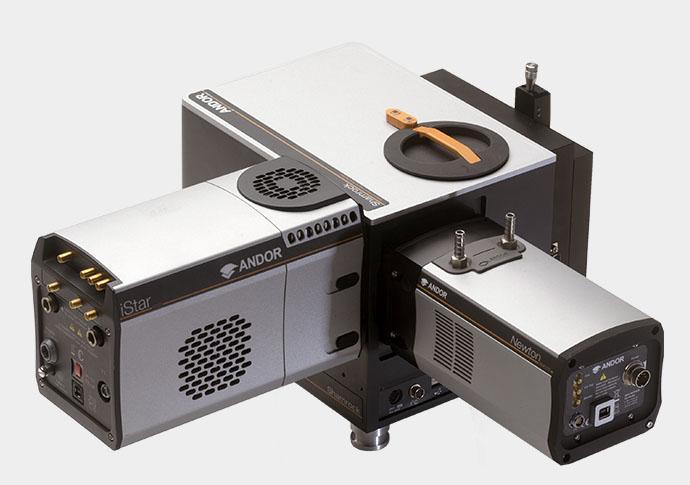High Sensitivity & Dynamic Range
- High QE >80%, low noise
- Large pixel well depths
- High resolution matrix
Non-invasive spectroscopy techniques in the Near Infrared (NIR) and Short-Wave Infrared (SWIR) can provide deeper, non-invasive probing capabilities for biological samples, increase accuracy of Raman-based organic molecules/biological samples analysis by minimizing autofluorescence background, or be used for quality control in the Pharmaceutical and Food industry.
Fluorescence/Photoluminescence, Raman, Absorption and pump-probe spectroscopy in the NIR/SWIR also allow the investigation of the optical, electronics and structural properties of advanced materials and nanostructures such as low bandgap semiconductors, quantum sources or NIR biotags.
Request Pricing Ask a Question
Andor’s range of CCD, InGaAs, sCMOS and ICCD detectors offer a wide range of sensitivity, dynamic range, acquisition rate, time-resolution and sensor formats to best suit specific experimental conditions in the NIR and SWIR up to 2.2 microns. While silicon-based detectors can detect effectively photons up to around 1.1 μm, InGaAs-based detector will provide a solution for detection in the 1 to 2.2 μm region. If you are an integrator/OEM please click here.
NIR (Near-Infrared) and SWIR (Short-Wave Infrared) spectroscopy are powerful analytical techniques used in a wide range of industries, including pharmaceuticals, agriculture, food and beverages, environmental and materials science.
These non-destructive methods go beyond identification of the molecular composition of samples and can give information on physical properties and material characteristics of complex substances through glass and plastic and deep into biological tissue.

Highly versatile and configurable platforms, patented Adapted Focus
Request Pricing Ask a Question
Higher resolution and platforms down to 0.02 nm, highly configurable
Request Pricing Ask a QuestionDelve into the world of NIR and SWIR spectroscopy with Andor's latest eBook. Learn about various applications and the advantages on offer to your area of research.
Download Free eBook